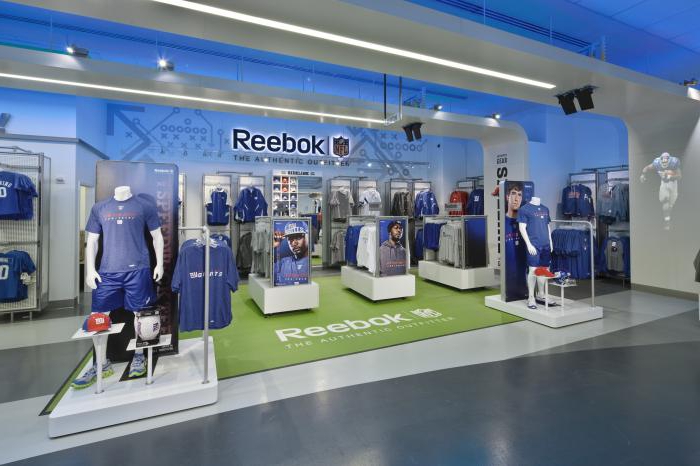Various types of commercial and non-profit organizations accompany the life of each of us. We encounter them in everyday life. These or other types of commercial organizations satisfy the various needs of people, while making a profit.
What is a commercial organization? This is a legal entity that pursues profit making as the main goal of its activity. Consider the main types of commercial organizations. They can be divided according to the nature of economic relations with consumers and producers of goods into several categories.

1. Performing sales and purchasing functions within the needs of the enterprise
These commercial organizations have developed in Russia's foreign and domestic trade as a result of privatization and liberalization processes that have taken place in our country foreign economic activity.
They are usually structural units of various enterprises. Their activities are repaired by the leadership of the firms that created them. In some cases, they are given relative independence (for example, in accounting for expenses and income). However, the results of these firms are reflected precisely in the general balance sheet of the enterprise in which they are part. They are not independent legal entities; they cannot be considered as intermediaries either.
Contracts do not formalize relations with enterprises of purchasing and marketing structures. They are built on administrative subordination. For the activities carried out by these types of commercial organizations, the production enterprise that created them is responsible for its own capital. These structures are often called sales or purchasing departments, but in some cases they carry special brand names, which usually include elements of the name of the main company. This policy is applied, in particular, by reviving sewing and textile enterprises in Russia, which create their own specialized stores.
2. Subsidiary commercial sales and purchasing firms

We continue to describe the types of commercial organizations. Subsidiary commercial supply and purchase companies are created by the enterprise in order to satisfy their own needs, but they have certain financial and legal independence. They can be considered formally independent of enterprises, but most often in practice they are under their full financial and administrative control. This is done either through the possession of controlling stakes in enterprises, or by virtue of agreements concluded between them. The advantage of using subsidiary commercial firms can be considered that the enterprises that created them do not formally meet their obligations. However, in cases where these firms suffer losses, this will also affect the financial results of the parent companies that created them.
Creation of subsidiaries for criminal purposes
In the 1990s, unfortunately, subsidiaries were often used for criminal purposes. These types of commercial organizations were created to evade taxation or unreasonable transfers of money by enterprises. Only in 1997, the Russian government began to take measures aimed at limiting the possibility of such operations. In any legitimate case, a subsidiary company becomes an intermediary in relation to the enterprise that created it.
3.Subsidiary business firms of several enterprises
Other types of commercial organizations are subsidiaries of several companies. They are created by two or more manufacturing companies in order to implement the sales cooperation agreement concluded between them. For example, several companies may invest in the creation of subsidiaries (one or more) for the marketing of products manufactured by them. In such cases, usually subsidiaries and parent companies enter into a cooperative agreement that defines the relationship between the parties involved. In these cases, intermediary subsidiaries have relatively large financial and administrative autonomy.
The advantages of the largest shareholder, the separation of losses and profits
Certain advantages may come from sales cooperation agreements in the management of a subsidiary of the company that owns the largest shareholding. This enterprise may establish certain quotas for operations of different manufacturers with similar goods or allow competition between them. Separation of losses and profits can be carried out in proportion to the amount of capital invested in firms, or departments of various manufacturers that operate on the principles of in-house settlement can be created at subsidiaries. At the same time, part of the proceeds is allocated to cover general expenses in proportion to the volume of sales (cost), as well as some other indicators.
Intermediary role, the possibility of concluding agreements by various departments
Each department may have its own contractual relationship with companies, but within the framework laid down in the principles of the agreement on sales cooperation.

A sales company in these cases can act as a collective intermediary. And its various departments can be individual intermediaries with their own terms of remuneration, guarantees and settlements.
Foreign trade associations
It should be noted that extensive experience of this kind of cooperation was accumulated by foreign trade associations in the sale of goods through joint-stock companies created by them abroad with the participation of foreign and domestic capital. In one form or another, part of these societies has survived to the present day. However, now their shareholders from Russia are joint-stock industry associations. There are examples when established Russian enterprises, as well as their industry associations, are shareholders of mixed companies that already exist. They have a high image and broad business connections in the markets.
4. Independent business firms
Consider also independent commercial firms that work on customer orders. They are diverse in terms of the amount of capital attracted by them, the number of personnel, and the scale of the territories covered by commercial activity. The types of activities of commercial organizations that can be attributed to independent commercial firms are also diverse.
These include small family-owned companies, as well as larger ones, which are created in the form of partnerships or LLC by adding the capital of several legal entities and individuals. It can also be large companies, representing OJSC or CJSC, which are formed as a result of privatization or investment by various capital organizations: insurance companies, banks, enterprises, funds. All these commercial organizations (the types and their characteristics we have just listed) are independent commercial firms. The shareholders holding the largest blocks of shares manage these companies, acting in the interests of profit on the capital invested in them, determining the commercial policy of these companies.
The specifics of small firms

Large, medium and small firms are financially and legally independent of clients.Having found their niche for the sale of goods, various types of financial commercial organizations independently choose consumers and suppliers of goods, being intermediaries between them. At the same time, the risk of capital investments in small firms is large enough, since it is difficult for them to compete with large companies that occupy the same niche in the market. As a rule, small firms do not have sufficient reserves of capital, therefore, they cannot always cover temporary losses. At the same time, their unit costs are usually higher than those of large enterprises. But small firms have some advantages. In particular, this lesser inertia of the capital invested in them, the ability to quickly reorient in their activities to other market segments. They also have greater efficiency compared to large firms in decision-making, as well as more stringent control over compliance with obligations of partners. Another advantage is the relatively low administrative costs.
Large and medium-sized firms
Typically, large and medium-sized firms specialize in the sale of goods belonging to one or more industries. They invest their money in advertising campaigns, serious market research, the creation of maintenance systems and distribution networks, which most often cannot afford small firms. Large and medium-sized companies independently determine the circle of buyers and suppliers with whom commercial operations can provide a sufficiently high and stable profit. In the event that new consumers and suppliers turn to them with a proposal for cooperation, these firms, having assessed the situation in the market, can accept the most favorable orders for the purchase or sale of goods.
Intermediary Functions and Financing of Independent Commercial Organizations
Intermediary functions are usually at the expense of clients performed by independent commercial organizations. That is, suppliers finance their own production, development and delivery of their goods, while paying remuneration to intermediary firms from the proceeds. Buyers also finance commercial organizations by rewarding these firms for fulfilling orders.
The advantages of large firms

If market research reveals the prospect of growing demand for certain types of goods, for this segment of the market, commercial firms orient their traditional suppliers. In the event that a large commercial organization becomes interested in purchasing certain goods or promoting sales, it can lend to expenses, advance promotions, and finance the development and manufacture of goods. That is, the larger the commercial company, the more powerful it is to influence the increase in demand and stimulate the production of the most promising products.
Even large companies that operate in the domestic Russian market, unfortunately, are still operating mostly one-sidedly. They are limited only by stimulating demand.
What types of commercial organizations can be identified yet? There are also trading houses, which should be mentioned separately.
5. Trading houses
These are usually large commercial structures, which are created mainly in the form of holding companies. Such companies may include service, sales, purchasing, transport, manufacturing and other companies. Transnational corporations are the majority of foreign trading houses.

Usually at the head of the holding is a powerful financial group that determines the commercial activities of a trading house.
Large trading houses specialize in a wide range of mainly consumer goods. They control many department stores in major cities of various countries.The following examples of trading houses known around the world can be given: Marks and Spencer, Reebok, Wool-worth, etc.

The structure of trading houses
The development of market relations in our country, the strengthening of financial and industrial groups, as well as the development of export production in them over time, can lead to the creation of such trading houses on the external and internal markets. Their structure is diverse and complex. A trading house may purchase goods from its traditional holding suppliers. At the same time, he can, through representatives in various countries, purchase goods on credit or in cash from suppliers that are completely independent. He may even, depending on the situation, advance their production.
Logistics use, advertising expenses, insurance companies
Trading houses use the most science of logistics. With its help, they optimize the flow of goods, choose the volumes and places of the damper warehouses of products, and also control the movement of various goods in distribution networks. Trading houses give priority to pre- and after-sales service of products. Up to hundreds of millions, and sometimes billions of dollars, reach the annual advertising costs of large trading houses. The holdings of almost all of them include insurance companies, through a reinsurance system, ensuring the stable position of these commercial structures.
Creation of trading houses in Russia
Since the 1980s, there has been a tendency among trading houses to provide the production and commercial structures included in them, more independence, up to their ability to conclude contracts with competing firms, but only until this entails a decrease in the functioning efficiency of the main enterprise . The creation of trading houses in our country began in the sale of construction and consumer goods. An example is the company "Old Man Hottabych". Such trading houses, unfortunately, sell mainly imported goods.
State and private enterprises
There is also another classification according to which state and private enterprises are distinguished. Private are privately owned. They are the most common type of business organization. Describing the main types of commercial organizations, it should be said separately about municipal and state enterprises. They represent their particular species. Their specificity lies in the fact that the property of these enterprises is in municipal or state ownership and the company belongs to the right of operational management or economic management. Therefore, various types of state-owned commercial organizations are legal entities having a secondary proprietary right, and not the right of ownership of property belonging to them. This is their specificity. Various goals in their activities can pursue these types of legal entities. Commercial organizations that are state-owned are, for example, state-owned factories that produce various products. They act primarily in the interests of the state.
So, we examined the concept and types of commercial organizations. Now you know what their specifics are and what they are. Classification of types of commercial organizations allows you to highlight the characteristic features inherent in each type.
